
The songbooks
Where do we find troubadour poetry preserved?
The poetry of the troubadours has reached us through more than a hundred different manuscripts, called cançoners ('songbooks'). The majority were compiled in the 13th and 14th centuries, but there are also some from the 15th and 16th centuries, and even one from the 18th. They were compiled for the most part in Italy, although an appreciable number were produced in Occitania, France, and Catalonia. They are manuscripts intended exclusively for troubadour poetry, which sets them apart from the medieval tendency to favour miscellaneous compilations, and is a sign of how highly regarded this literary tradition was.
In addition to the cançoners, this poetry has been preserved in manuscripts that contain works which quote troubadour pieces, or fragments thereof: these are indirect witnesses. Occasionally we also find some poems in manuscripts of works that are unconnected to the troubadour tradition, like notarial registers or manuscripts on theology, law, or other topics: in these cases, the poems have often been copied to fill a blank space, added later, or are in some way foreign to the initial project of the manuscript. Finally, we sometimes find poems copied in unexpected places: on flyleaves1 or on leaves that were later used to reinforce the covers of another volume.2 An inscription has even been found on a window lintel,3 and —albeit outside the troubadour tradition— a fragment of an epic poem on a tile!4
With regard to the cançoners, that is monographic anthologies of troubadour poetry, scholars have drawn up lists of the main witnesses, which range from 31 (Burgwinkle 1999) to 45 (Riquer 1975; Asperti 2002). The discrepancy between these figures is down to the criteria used when classifying the most significant manuscripts by the number of pieces transmitted, their programme of compilation, their material and orthographic quality, and the level of information that they provide on the troubadour movement (for example, if they include the melodies, vidas or razos, or a variety of attributions, etc.).
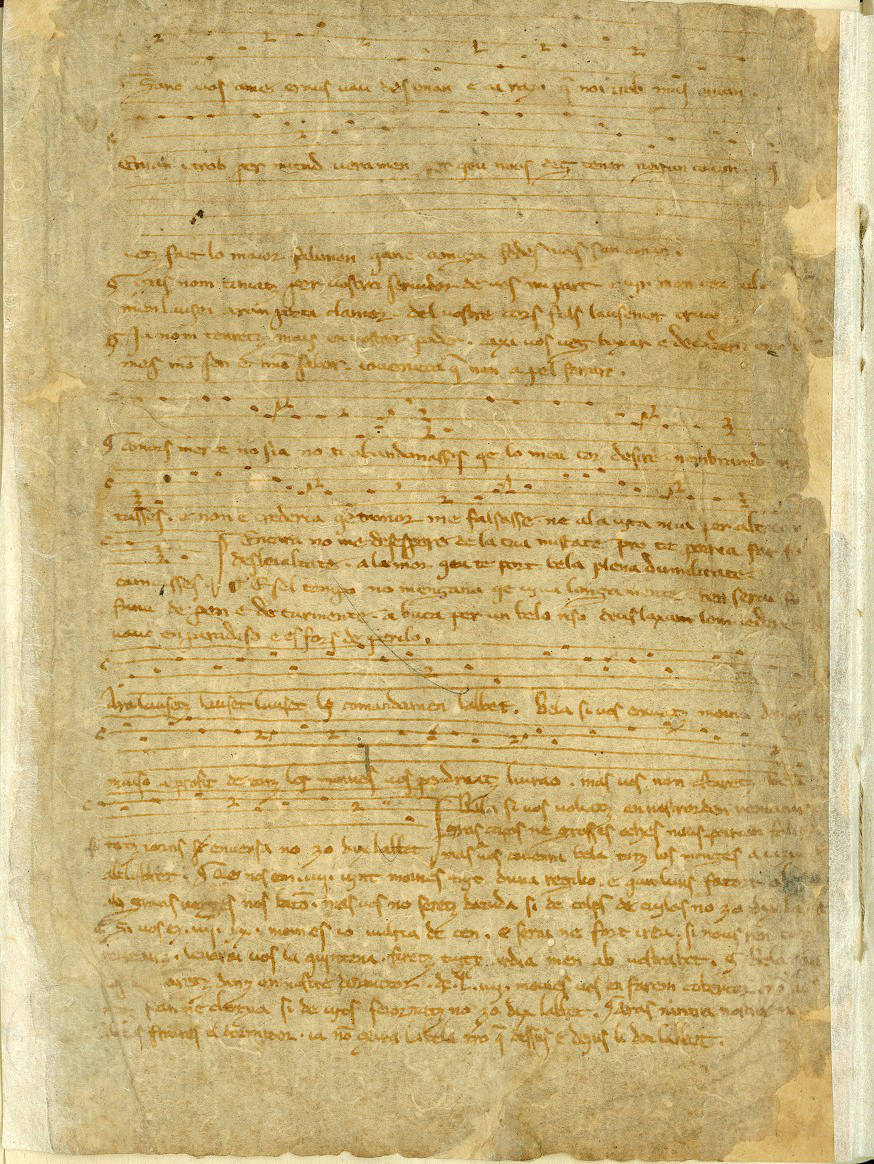
About cançoners
We find considerable differences between cançoners in terms of the materials they are made from, the quantity and quality of the poetry copied therein, their internal organisation, etc., due either to compilation criteria or to the vagaries of their conservation over the centuries. So we have luxurious manuscripts (such as A, N, I, K, and Sg among others), commissioned by monarchs, members of the aristocracy, or the urban patriciate, on parchment and with rich decoration, as well as other plainer examples. Among the other commissioners we find members of the petty nobility, the incipient bourgeoisie, or professional scribes who were also bibliophiles (and who used to copy their manuscripts themselves, sometimes on paper and with little or no decoration, for example, Fa, N2 and perhaps VeAg).
There are manuscripts organised according to author, or genre —or a combination of the two—, which at times distinguish between the troubadours of the 'classic' period, in other words the oldest ones, and more contemporary ones; and some —only four!— have musical notation. As well as the troubadours’ work —their poems and melodies—, some cançoners feature vidas and razos, which are short biographies (vidas) or explanations about the origin of a poem (razos) in prose. These were added to provide context for the first ‘readers’ of this poetry (remember that troubadour poetry was meant to be sung rather than read).
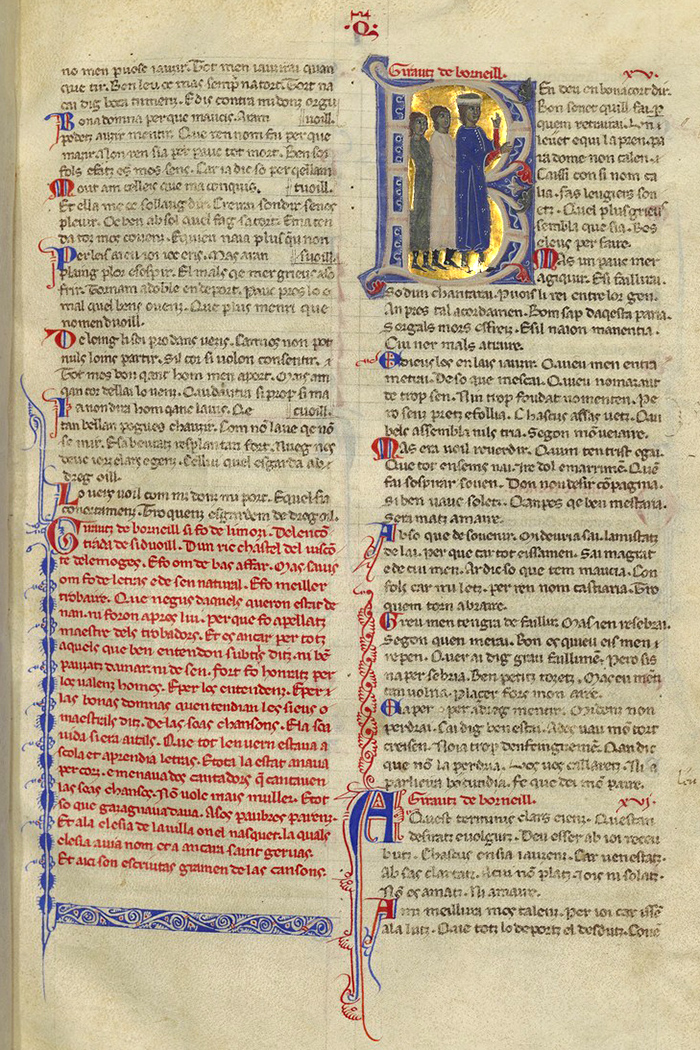
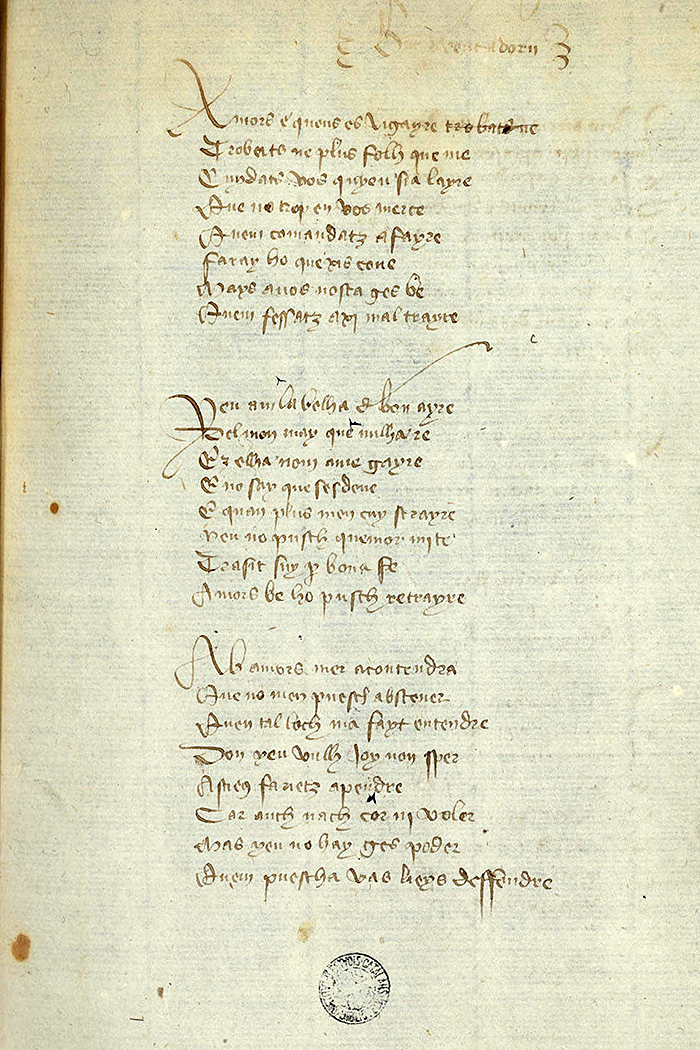
Cançoners and sigla
Faced with the considerable number of manuscripts of troubadour poetry, scholars soon realised they needed a system of identification to make it easier to study several witnesses of the same work, as well as the manuscript tradition as a whole. The first to assign letters, known as ‘sigla’ (singular ‘siglum’, the Latin word for ‘sign’), to manuscripts as a mean of identifying and classifying them was Karl Bartsch in 1872: he gave each cançoner a letter, upper case for manuscripts on vellum and lower case for those on paper. His classification system became an essential reference, but over time, as new witnesses were added to the list, Bartsch’s classification criteria were abandoned. Subsequent scholars decided that this qualitative distinction generated confusion and prejudice detrimental to academic research.
Although most of the sigla assigned by Bartsch are still in use today, other scholars have since corrected, amended, and extended his list. In some cases, for example where a single manuscript has been assigned two different sigla, this has led to confusion. Jeanroy (1916), Brunel (1935), and Zufferey (1987) are the scholars who updated Bartsch’s list, with other notable contributions from, for example, Avalle (1961). Sometimes the same manuscript is also assigned more than one siglum because it contains texts from more than one tradition (and each tradition has its own system of sigla). For example: there are trouvères manuscripts that contain some troubadouresque pieces and so have one siglum as a French cançoner and another as a troubadour cançoner (so the troubadour cançoner W is known as M in the French tradition). And in Catalan, the scholar Jaume Massó i Torrent assigned some sigla to the witnesses of Catalan poetry: in his list, for example, Sg appears as A, and VeAg as Ha and Hb.
A table of sigla and their corresponding manuscripts can be found [here].

.jpg)
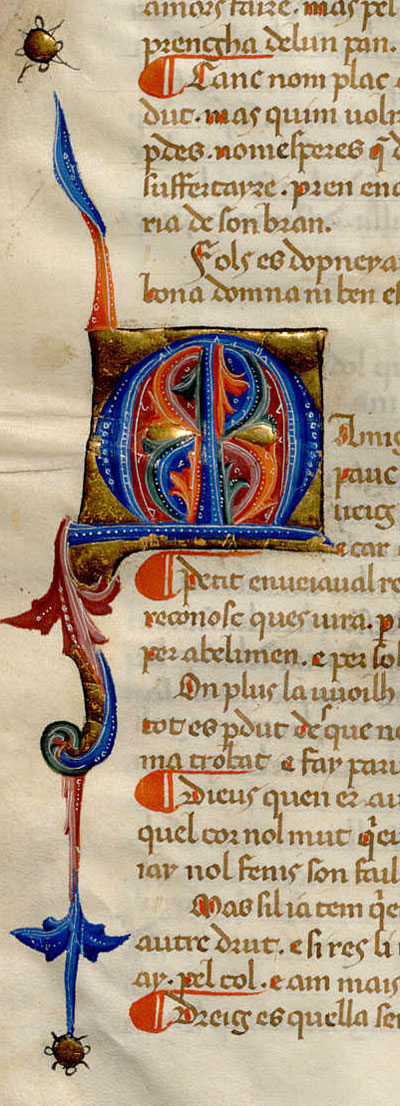
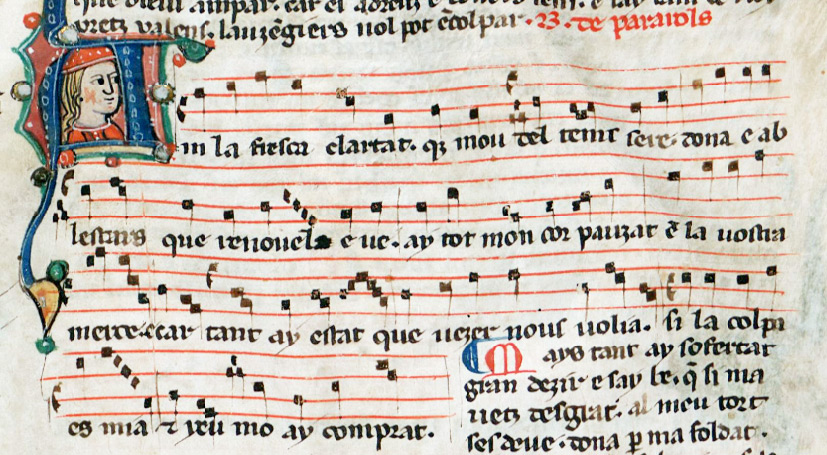
Reference list
- Asperti, Stefano (2002),«La tradizione occitanica». Lo spazio letterario nel Medioevo : 2. Il Medioevo volgare, ed. Pietro Boitani, Mario Mancini, i Alberto Vàrvaro, Roma: Salerno, II, 521–254.
- Avalle, D’Arco Silvio (1961): La letteratura medievale in lingua d'oc nella sua tradizione manoscrita: problemi di critica testuale, Torino: Einaudi
- Burgwinkle, William (1999): «The chansonniers as books», The Troubadours: An Introduction, ed. Simon Gaunt and Sarah Kay, Cambridge: Cambridge University Press, 246-262
- Brunel, Clovis (1935): Bibliographie des manuscrits littéraires en ancien provençal, Paris: Droz.
- Jeanroy, Alfred (1916): Bibliographie sommaire des chansonniers provençaux. Manuscrits et éditions. Paris: Champion.
- Massó i Torrent, Jaume (1914). «Bibliografia dels antics poetes catalans», Annals de l’Institut d’Estudis Catalans, 5, 3-284.
- Riquer, Martí de (1975): Los trovadores, Barcelona: Planeta.
- Zufferey, François (1987): Recherches linguistiques sur les chansonniers provençaux, Genève: Droz.
M. Victoria Rodríguez Winiarski (2018)
